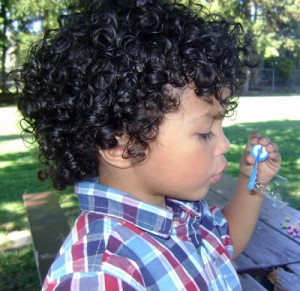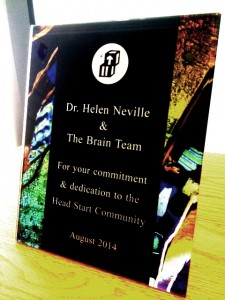Brain Research for Families
Para Familias, El Laboratorio del Desarrollo del Cerebro
The Brain Development Lab at the University of Oregon uses decades of research on neuroplasticity and child development to create and empirically test programs that create connections between children and their parents. We use brain imaging (EEG and MRI) in children and adults to understand how successful interventions may be changing brains.
Our team, founded by Helen Neville, Ph.D., includes neuroscientists, psychologists, teachers, graduate students, and many talented undergraduate and post-baccalaureate students. Click here.
Looking for our formal research publications? Click here.
Our Research Goals
 For several decades, the Brain Development Lab has used brain imaging techniques such as electrophysiology (event-related potentials; ERPs) and magnetic resonance imaging (MRI) to study the development and plasticity (i.e., the ability to change) of the human brain. Previously, we have studied individuals who are deaf or blind, people who learned their first or second spoken or signed language at different ages, and children of different ages with different cognitive capabilities. Over the course of this research we have learned that different parts of the brain have different degrees of neuroplasticity (i.e., the ability for the human brain to change depending on experience).
For several decades, the Brain Development Lab has used brain imaging techniques such as electrophysiology (event-related potentials; ERPs) and magnetic resonance imaging (MRI) to study the development and plasticity (i.e., the ability to change) of the human brain. Previously, we have studied individuals who are deaf or blind, people who learned their first or second spoken or signed language at different ages, and children of different ages with different cognitive capabilities. Over the course of this research we have learned that different parts of the brain have different degrees of neuroplasticity (i.e., the ability for the human brain to change depending on experience).
Neuroplasticity
Some parts of the brain are not as changeable and consistently function in the same way over time, regardless of differences in experience during development. Other parts and functions of the brain can be changed dramatically by experience and depend on positive input to develop to their fullest potential, especially during certain time periods known as, “sensitive periods”. There are several different sensitive periods, even within particular parts of the brain. Additionally, there are some parts of the brain that are able to change throughout life. Click here for more.
A Double Edged Sword
Although the ability of experience to change the brain can be very beneficial, there are two sides to every story. Plasticity can be a double-edged sword. The parts of the brain that are the most able to change are enhanced with different kinds of experience (e.g., in people who are born blind or deaf). However, these areas of the brain are also the most vulnerable in individuals who have or are at risk for developmental disorders. One brain system that works in this way is the system important for selective attention, which is your ability to stay focused on one thing even in the presence of distractions. This skill is part of an important foundation for learning in children.
Brain Development Interventions
 Based on the results of these studies, along with findings from a number of other researchers, we have developed a program of research to test the effects of different types of training on brain development and cognition in normally developing preschool children. In one set of studies we are interested in finding out more about how experience affects the most changeable and vulnerable parts of the brain in 3-5 year old children enrolled in Head Start. We evaluate the effects of experience on brain development using the brain imaging techniques mentioned above, with a focus on brain systems important for attention and language. We also test other aspects of cognition that are important for school readiness and success, like intelligence, language, and self-control. To help us understand how children develop over time, we test each child before and after eight weeks of either; (a), participation in a program which the child’s caregiver participates in a parenting group while the child receives training in attention and self-control or (b) normal participation in Head Start classroom activities.
Based on the results of these studies, along with findings from a number of other researchers, we have developed a program of research to test the effects of different types of training on brain development and cognition in normally developing preschool children. In one set of studies we are interested in finding out more about how experience affects the most changeable and vulnerable parts of the brain in 3-5 year old children enrolled in Head Start. We evaluate the effects of experience on brain development using the brain imaging techniques mentioned above, with a focus on brain systems important for attention and language. We also test other aspects of cognition that are important for school readiness and success, like intelligence, language, and self-control. To help us understand how children develop over time, we test each child before and after eight weeks of either; (a), participation in a program which the child’s caregiver participates in a parenting group while the child receives training in attention and self-control or (b) normal participation in Head Start classroom activities.
The results of the studies show that these different types of experiences (participation in a parent group with child attention training, or Head Start as usual) have significant, and differing impacts on children’s attention and language skills, and on their brain function for attention. These studies contribute to a basic understanding of how the human brain changes and develops. In addition, these studies can provide information that will help in designing and implementing more effective educational programs that may improve a child’s readiness for school and improve a child’s ability to do well in a school setting.
Click here for more.
Wondering what your visit will be like? Click here!


